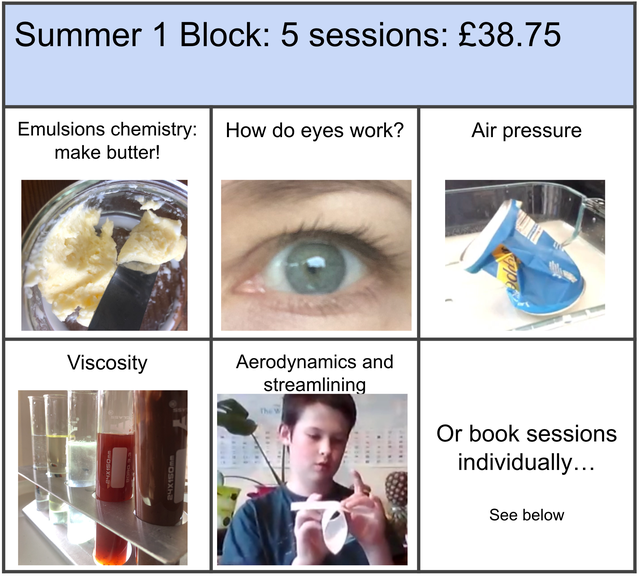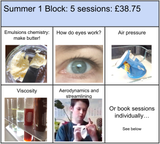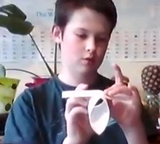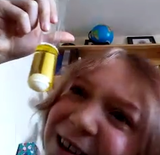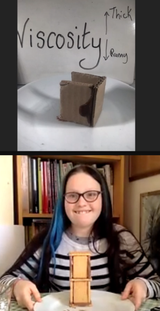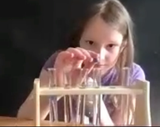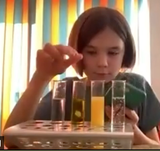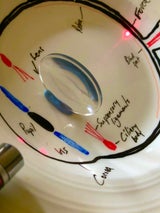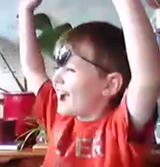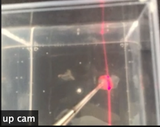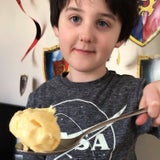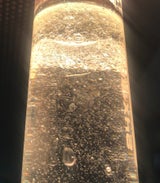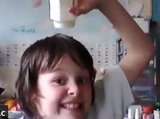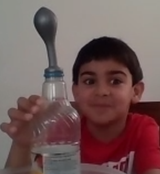- Online STEM
- >
- Summer 1
- >
- Online STEM: Summer 1
Online STEM: Summer 1
Emulsions chemistry (18th April)
How do eyes work? (25th April)
Air pressure (2nd May)
Viscosity (9th May)
Aerodynamics and streamlining (16th May)
Every Tuesday (18th April to 16th May)
8-12s group: 1 - 1:50pm (UK GMT)
11-16s group: 2:10 - 3pm (UK GMT)
(Select from the options at the bottom).
Your home-education journal is already written!
In your booking confirmation email you'll receive a summary of the keywords, key concepts and student activities planned for each class, specific to your chosen age group. You can simply copy, paste and adapt it for your home-education journal and use it to support discussions with your child afterwards.
------------------------------------------------------------
Emulsions chemistry (18th April)
Learn all about emulsions chemistry by making butter!
+ Conduct experiments to understand emulsions and make your own butter!
+ Watch exciting demonstrations!
+ The older groups will also learn about colloids, miscibility and hydrophobic and hydrophilic properties
Equipment (To join an entirely optional practical)
It is a good idea to have a whiteboard or paper, pen, ruler and calculator to hand in each session.
- Double cream (min. 50mL)
- A clean jar (glass or strong plastic)with a tightly-fitting lid
- Sticky tape
- A few hard, dried beans / peas / pulses.
- Two small jars with lids, or boiling tubes with rubber bungs
- Pipettes / syringes / droppers
- Vegetable or olive oil (approx 20mL)
- Vinegar (any kind), approx 10mL
- A few drops of detergent / washing up liquid / liquid soap
- Water
- Cloth / wipes in case of spills
- A tray or plate to work on might be a good idea
Links suggest sources of appropriate resources
What might younger students need help with?
Making sure lids are on tightly and taking care not to knock things when shaking jars! They may need help shaking their jars if their arms get tired!
------------------------------------------------------------
How do eyes work? (25th April)
Take a journey through the eye and see how it works!
+ Join in lots of weird and wonderful investigations to understand how our eyes work!
+ Make a model of an eye
+ Watch a short (5 mins) dissection of a real eye! (& join in at home if you want)
+ The older groups will also learn about the structure and function of the eye extending to KS4 level.
(Please note this contains a short dissection of a sheep's eye).
Equipment (To join an entirely optional practical)
It is a good idea to have a whiteboard or paper, pen, ruler and calculator to hand in each session.
- A torch (not too bright)
- A mirror
- White paper
- Black pen
- Ruler
- An eye patch! Or something they can use to gently cover one eye for about five minutes (scarf, tie, bandana...)
- A white bowl (to draw on, one you can clean easily or don’t mind being marked) Or just use paper.
- Felt tip pens / marker pens
- A magnifying glass may help to add to their model but is not essential
To join the dissection at home:
- An eyeball (easily obtained from a fish head, or you may be able to get a pig’s or lamb's eye from a butcher)
- plate or tray
- Dissecting scissors or small sharp scissors
- Forceps or tweezers
Links suggest sources of appropriate resources
What might younger students need help with?
Younger students may need help covering one eye with a patch or scarf, and may need preparing for seeing a real eye dissection (or looking away if preferred).
------------------------------------------------------------
Air pressure (2nd May)
Learn what air pressure is, what changes it and the incredible impacts it can have!
+ Make a barometer!
+ Conduct experiments to investigate how temperature changes air pressure
+ Watch exciting demonstrations!
+ The older groups will also learn about kinetic energy, the particle model for gases and the relationship between volume and pressure..
Equipment (To join an entirely optional practical)
It is a good idea to have a whiteboard or paper, pen, ruler and calculator to hand in each session.
- Three balloons
- Scissors
- A sturdy bottle (a glass milk bottle is perfect) stiff plastic, glass or metal ideally, needs a narrow neck)
- Bowl of very cold water
- Bowl of very warm water (not hot enough to scald) take care with water near electronics
- A drinking glass / jam jar
- Sticky tape
- A4 card and pens
- A lightweight drinking straw (paper is great)
What might younger students need help with?
Stretching and cutting balloons, taking care with water and electronics.
------------------------------------------------------------
Viscosity (9th May)
Learn what the term "viscosity" means and how scientists measure it
+ Test various liquids for viscosity, including chocolate!
+ Develop understanding of fair testing and experimental design
+ The older groups will also evaluate different viscosity measurement methods
Equipment (To join an entirely optional practical)
It is a good idea to have a whiteboard or paper, pen, ruler and calculator to hand in each session.
- Approx. 50g molten chocolate in a cup (they'll need this melted and ready to use at the beginning of the session) take care with hot liquids. (if you don't want to use chocolate, a flour and water paste would also work)
- 5 teaspoons
- 6 rectangular biscuits or pieces of card
- Two plates
- Four or five Boiling tubes / tall narrow glasses / jars (the narrower they are the less liquid you'll need)
- Enough of each of these to fill at least 10cm depth of your tubes or jars
-water (take care near electronics)
-Liquid soap / shampoo
-Vegetable or other oil
-To extend the experiment: One or more other liquids (such as tomato ketchup, passata, sauce, fruit juice)
- Five or more small heavy balls of equal size, they need to fit in your tubes: Marbles (standard / small size) are ideal. Small bolts, ball-bearings, nuts, drawing pins or 5p pieces would also do.
- Stop watch / timer
- A lightweight chopping board
- Two tins of food (full) or a pile of books
- Blue tack / similar
- Pipettes / spatulas / syringes may be helpful
- Pen / pencil and paper / whiteboard and pen
- ruler
- You might want cloths and hand washing wipes to hand!
Links offer suggested sources of suitable materials.
What might younger students need help with?
This could be a little messy! Younger students may need help with cleaning as they go and not touching computers with sticky hands!
They may need chocolate to be melted or kept warm and molten until the need it (should be fairly early in the session).
------------------------------------------------------------
Aerodynamics and streamlining (16th May)
Learn about the physics of aerodynamics and streamlining whilst trying some surprising paper aeroplane designs!
+ Conduct experiments to understand streamlining
+ Watch exciting demonstrations!
+ The older groups will also learn about surface area and air resistance and how forces interact
Equipment (To join an entirely optional practical)
It is a good idea to have a whiteboard or paper, pen, ruler and calculator to hand in each session.
- Two identical pieces of A4 paper
- Tall measuring cylinder or similar tall transparent container of water, a pint glass would do (take care near electronics). A large measuring cylinder like this is perfect!
- Plasticine or blue tak (not soft clay, must sink)
- Stop watch or timer
- Several pre-cut paper squares 10cm x 10cm
- Several strips of paper ~2cm wide and at least 10cm long
- Glue stick
- Scissors (take care with sharps)
- Ruler and pen / pencil
- Optional: pens to decorate planes
- Cloth / tray for spills
Links suggest sources of appropriate resources
What might younger students need help with?
They may need support / supervision to drop things from a height. They may need help to cut, fold and stick paper accurately.
------------------------------------------------------
Price is for one device (screen) to join for one session.
Upon booking you will receive a photography consent form and opportunity to let us know about any Special Educational Needs and Disabilities (SEND).
By booking you are agreeing to read and abide by the Privacy policy, safety and cancellation policies (Opens in a separate window).
